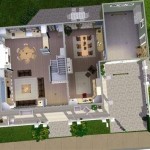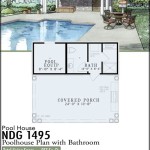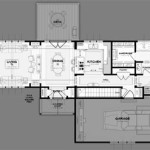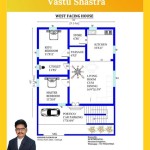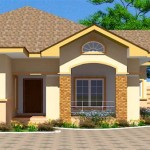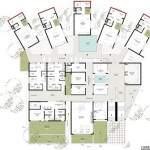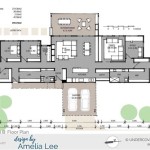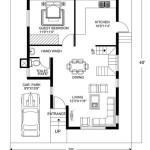Barred Owl Birdhouse Plans: A Comprehensive Guide
Barred owls, known for their distinctive "who cooks for you? who cooks for you-all?" call, are captivating raptors that play a vital role in maintaining ecological balance. Attracting these magnificent birds to a property requires an understanding of their habitat needs, particularly their nesting preferences. A well-constructed and appropriately placed owl box can provide a secure and suitable nesting site, supplementing natural tree cavities that are increasingly scarce in fragmented landscapes. This guide offers a comprehensive overview of barred owl birdhouse plans, covering essential design considerations, construction techniques, placement strategies, and ongoing maintenance practices.
Key Considerations in Barred Owl Birdhouse Design
The design of a barred owl birdhouse is paramount to its success in attracting and accommodating a nesting pair. Several factors influence the owl's acceptance of a man-made structure, including size, shape, entrance dimensions, and internal features. A carefully considered design will maximize the chances of occupancy and successful breeding.
Size and Dimensions: Barred owls are relatively large birds, necessitating a spacious nesting cavity. An ideal owl box should have a floor area of at least 18 inches by 18 inches, with a height of approximately 24 to 30 inches. This generous size provides ample room for the owls to move around, build a nest, and raise their young. A smaller box may be rejected by the owls or lead to overcrowding and stress for the chicks.
Entrance Hole: The entrance hole is a critical aspect of the design, as it serves as the owl's point of access and also influences the box's insulation and protection from the elements. A circular entrance hole with a diameter of 6 to 7 inches is recommended. This size is large enough to allow the owls to enter and exit easily, while still being small enough to deter larger predators such as raccoons. Placing the entrance hole near the top of the box, approximately 2 to 3 inches below the roof, provides added protection from rain and snow.
Material Selection: The choice of materials significantly impacts the durability, insulation, and overall suitability of the owl box. Untreated, rot-resistant wood is the best option. Cedar, redwood, or cypress are excellent choices due to their natural resistance to decay and insect infestation. Avoid using pressure-treated lumber, as the chemicals used in the treatment process can be harmful to the owls. Exterior grade plywood, at least ¾ inch thick, can also be used for the sides, bottom, and roof. Thicker materials provide better insulation and structural integrity.
Internal Features: While barred owls typically do not construct elaborate nests, providing a layer of nesting material within the box can encourage occupancy. A 2 to 3-inch layer of wood shavings, dried leaves, or shredded bark at the bottom of the box provides a comfortable substrate for the owls to lay their eggs. Adding a rough, grooved surface to the inside of the box, particularly below the entrance hole, will assist the owlets in climbing out of the box when they are ready to fledge. This can be achieved by attaching strips of hardware cloth or carving shallow grooves into the wood.
Drainage and Ventilation: Proper drainage and ventilation are essential for maintaining a healthy environment inside the owl box. Drill several drainage holes, approximately ¼ inch in diameter, in the bottom of the box to prevent water from accumulating. Ventilation holes, located near the top of the box, allow for air circulation, reducing humidity and preventing the build-up of harmful gases. These holes should be small enough to prevent rain from entering the box and should be strategically placed to maximize airflow.
Constructing a Barred Owl Birdhouse: Step-by-Step Guide
Building a barred owl birdhouse is a manageable project for individuals with basic woodworking skills and tools. Following a detailed plan and adhering to proper construction techniques will ensure the creation of a durable and functional nesting structure.
Materials and Tools: Before beginning construction, gather all necessary materials and tools. These typically include untreated lumber (cedar, redwood, cypress, or exterior grade plywood), screws or nails, a saw (circular saw or hand saw), a drill, a measuring tape, a pencil, safety glasses, and gloves. Ensure all lumber is properly cut according to the chosen owl box plan.
Cutting the Components: Carefully cut all the components of the owl box according to the dimensions specified in the plan. Accuracy in cutting is crucial for ensuring a snug fit and a structurally sound box. Use a circular saw or hand saw to cut the sides, bottom, roof, front, and back panels to the correct sizes.
Assembling the Box: Begin by assembling the sides, bottom, and back panels of the box. Use screws or nails to securely fasten the pieces together. Ensure the joints are tight and flush to prevent drafts and water intrusion. Next, attach the front panel, making sure to pre-drill holes to prevent the wood from splitting. Cut the entrance hole in the front panel using a hole saw or jigsaw. The entrance hole should be smooth and free of splinters to avoid injuring the owls.
Installing the Roof: The roof of the owl box should be slightly sloped to facilitate water runoff. The roof should also overhang the sides and front of the box to provide added protection from the rain. Attach the roof to the box using screws or nails, ensuring a secure and weatherproof seal. Consider using roofing felt or shingles to further protect the roof from the elements and extend the lifespan of the box.
Adding Internal Features: Place a 2 to 3-inch layer of wood shavings, dried leaves, or shredded bark at the bottom of the box to provide a comfortable nesting substrate. Attach strips of hardware cloth or carve shallow grooves into the inside of the box below the entrance hole to assist the owlets in climbing out. These features will enhance the box's attractiveness to the owls and increase the likelihood of successful nesting.
Finishing Touches: Once the box is assembled and the internal features are added, inspect it carefully for any sharp edges or splinters that could injure the owls. Sand down any rough spots and ensure all screws or nails are securely fastened. Avoid painting or staining the owl box, as the chemicals in paint and stain can be harmful to the owls. If desired, apply a natural, non-toxic wood preservative to the exterior of the box to protect it from the elements.
Placement and Maintenance of the Barred Owl Birdhouse
The location and maintenance of a barred owl birdhouse are crucial for its long-term success. Selecting an appropriate site and providing regular maintenance will maximize the chances of occupancy and ensure the health and safety of the nesting owls.
Location Considerations: Barred owls prefer nesting sites in mature forests or wooded areas near open fields or water sources. The owl box should be placed in a secluded and undisturbed location, away from heavy human traffic and potential disturbances. A suitable tree for mounting the box should be at least 20 feet tall and have a sturdy trunk and strong branches. The box should be mounted at a height of 15 to 20 feet above the ground, facing away from prevailing winds. An east or southeast facing entrance is often preferred, as it provides protection from the afternoon sun and allows the morning sun to warm the box.
Mounting Techniques: Securely mounting the owl box is essential for its stability and safety. Use heavy-duty lag bolts or screws to attach the box to the tree trunk. Avoid using nails, as they can loosen over time and create a safety hazard. Consider using a swivel bracket to allow the box to be easily lowered for cleaning and maintenance. Protect the tree from damage by using tree-friendly straps or spacers to prevent the box from rubbing against the bark. Ensure the box is level and securely fastened to prevent it from swaying in the wind.
Monitoring and Maintenance: Regularly monitor the owl box for signs of occupancy, such as owl droppings, feathers, or pellets. Avoid disturbing the box during the nesting season, which typically runs from February to May. After the breeding season, clean out the box to remove any old nesting material, droppings, or debris. This will help prevent the build-up of parasites and diseases. Inspect the box for any damage or deterioration and make necessary repairs to ensure its continued functionality. Repairing or reinforcing the box during the off-season will maximize its lifespan and attractiveness to future nesting owls.
Predator Deterrents: To protect the owls from predators, consider installing predator guards around the base of the tree. These guards can be made from smooth metal sheeting or plastic tubing and should be at least 3 feet wide to prevent raccoons and other climbing predators from reaching the box. Trimming branches that are close to the box can also help prevent predators from gaining access. Regularly inspect the predator guards and make necessary repairs to ensure their effectiveness.
By carefully considering these design, construction, placement, and maintenance factors, individuals can significantly increase the likelihood of attracting barred owls to their property and contributing to the conservation of these magnificent birds.

Barred Owl House 70birds Birdhouse Plans Index

Barred Owl Birdhouse Plans 70birds Index

Barred Owl Nest Box Plans 70birds Birdhouse Bird Houses House Kits

Bird Houses Nesting Box Barred Owls House Plans Kits

Ilration Of Barred Owl Next Box And Assembly Plans Nesting Boxes Nest

Barred Owl House Google Search Bird Plans Houses Diy

Owl House Plans Bird Bluebird
How To Build A Barred Owl House

Barred Owl House Houses Large Box The Birdhouse

11 Elegant Great Horned Owl House Plans Photograph Bird Barn Homemade Houses

